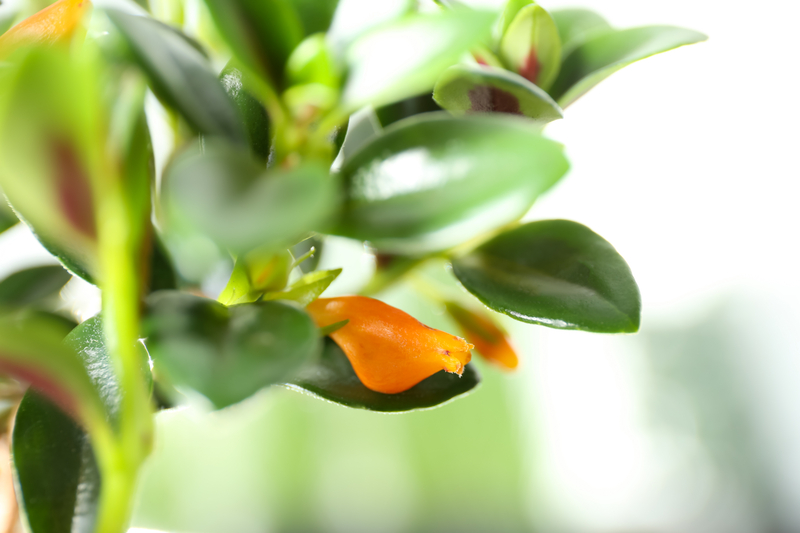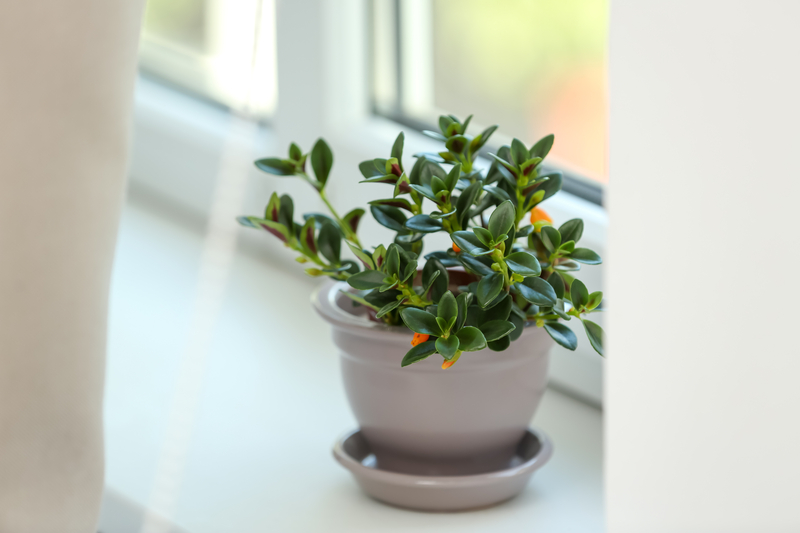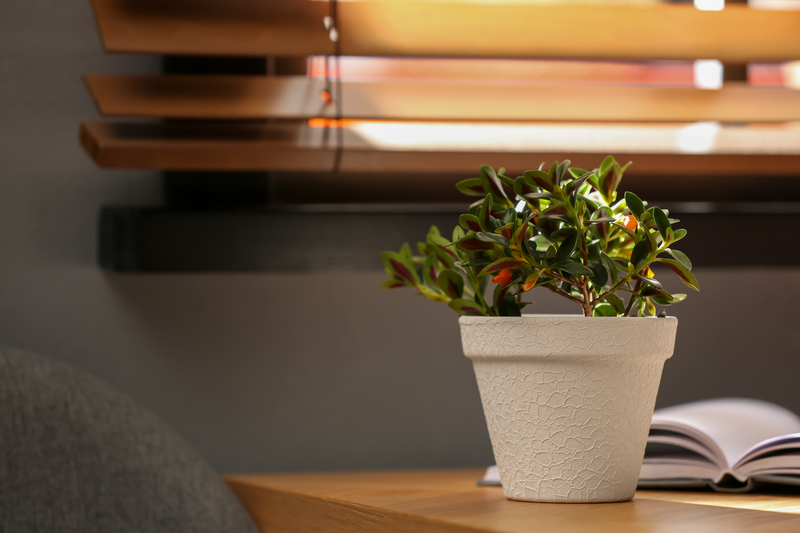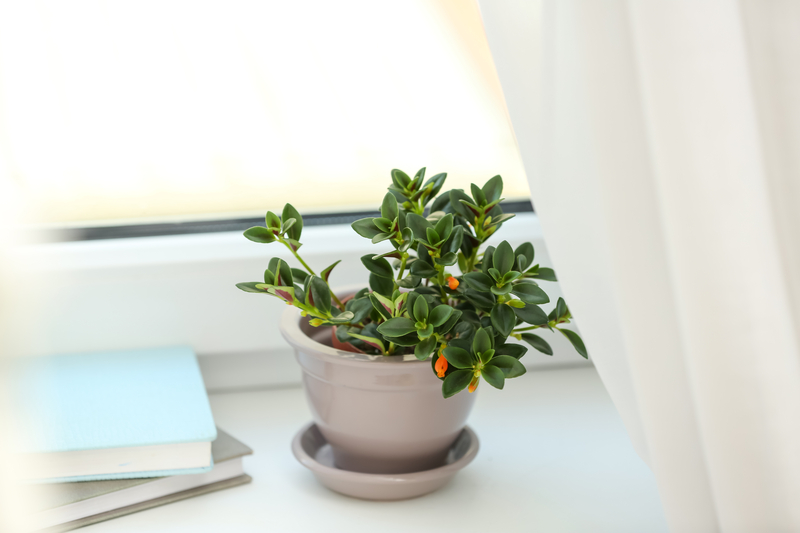The goldfish plant name comes from its peculiar flower shape with long, tubular orange and red flowers that look similar to a goldfish. Goldfish plants have a reputation for being a bit fussy, which is why they will need a lot of attention to detail. It is a perennial, meaning it generally lives longer than two years and blooms year-round. Keep reading for a deep dive into goldfish plant care.
Scientific Name
The scientific name of a goldfish plant is Columnea Gloriosa, a part of the Nematanthus species.
Other Names
- Guppy Plant
- Candy Corn Plant
- Lipstick Plant
Different Types
Out of the 30 different goldfish plants, Firebird, Aladdin’s Lamp, and California Gold are some of the most common varieties. Firebird and Aladdin’s Lamp varieties produce red flowers and dark green leaves, while the California Gold has yellow flowers with a red edge.
What Soil Works Best for a Goldfish Plant?
Your goldfish houseplant will prefer a peat moss-based potting mix, such as African violet. The soil should be light coarse and not hold on to the water for an extended time, as the roots require well-draining soil. Using a pot with a drainage hole can avoid root rot, a common problem with this plant.
How Much Sun Does a Goldfish Plant Need?
To blossom, the goldfish plant needs about 13 hours of bright light a day. Because of this, a grow light is highly recommended, especially during the winter months. An eastern-facing window providing indirect sunlight will be perfect, as the goldfish plant does not like direct light. Direct sunlight will cause the goldfish plant’s leaves to burn and turn brown.
What Temperature Works Best for a Goldfish Plant?
The preferred temperature of the goldfish plant is what makes it a great indoor plant. Despite being a tropical plant, the goldfish plant thrives at temperatures between 65 and 75 degrees Fahrenheit year-round.
Tropical plants generally like room temperature because they grow under canopies of trees in their natural habitat, causing the temperature to be cooler than we might think. The goldfish plant can tolerate a minimum of 60 degrees in the winter, but if the houseplant gets too cold, it will cause leaf drop.
Do Goldfish Plants Enjoy Humidity?
Humidity is a common reason why some indoor goldfish plants do not survive. The plant needs moderate to high humidity, and indoor air tends to get dry very quickly. To combat this, you might want to invest in a humidifier to keep the air at 50% relative humidity or higher.
Another way to create a bit more humidity is to mist the plant. Misting the plant with room temperature water works best. You mustn’t mist with cold water, as this will cause brown spots on the foliage.
How Often Should You Water a Goldfish Plant?
During the spring and summer growing season, you should water often and keep the soil of your goldfish plant moist. Allow for the top two inches of soil to become dry between waterings.
During the winter, you can allow for slightly drier soil by cutting back on your watering routine. However, don’t allow the soil to get completely dry.
What Size Do Goldfish Plants Grow To?
A fully grown goldfish plant can be up to three feet long, or 90 centimeters. The leaves are usually around two to three inches long. Due to the size of the leaves, many people keep this plant in a hanging basket in their homes.
Most Common Bugs
The most common bugs that cause an infestation on a goldfish plant are mealworms, spider mites, and cottony cushion scales. Part of your goldfish plant care routine should be checking the leaves for these infestations. To cure the goldfish plant of the common pests, use insecticide and wipe down the leaves.
Most Common Problems
The most common problem with a goldfish plant is overwatering for a plant that constantly needs moist soil. Overwatering can cause root rot and leaf drop in your houseplant.
Another sign that your goldfish plant is not being cared for properly is if the leaves are turning brown. Brown leaves could either be from overwatering or too much direct sunlight burning the leaves of your goldfish plant.
The last common problem is legginess—when the plant has too much space in its current pot. To fix this, you will want to repot your goldfish plant into a smaller hanging basket and pinch back the plant where it has stopped blooming.
Can You Propagate a Goldfish Plant?
Goldfish plants do very well when propagated. You will want to prepare the soil mix the same way, with equal parts vermiculite, perlite, and sphagnum moss, while also adding a rooting hormone powder to support root growth.
You will want to cut a four-inch stem tip without flower buds during the spring and summer growing season for the best results. Make sure that the stem cutting includes at least two leaf nodes. Keep the stem tip cutting consistently warm, at around 70 degrees Fahrenheit.
When you notice new growth, use a liquid fertilizer every two weeks to further encourage growth.
Can You Repot a Goldfish Plant?
A goldfish plant must be repotted every two years, usually in March or April. The goldfish houseplant thrives in a shallow pot, so remember this when repotting. Use African violet potting mix or your combination of the equal parts mentioned previously to fill your new pot.
When you carefully remove the goldfish plant from its old pot, use room-temperature water to rinse off the roots. This process of rinsing off the roots is called root-pruning, and its purpose is to encourage new growth. Trim the bottom third of the roots with sterilized gardening scissors, and transfer the plant to its new pot.
Why is my Goldfish Plant Dropping Leaves?
Leaf drop is a common problem with goldfish plants when they are too wet or too dry. Make sure when watering your goldfish plant that the top two inches of the soil are dry. You can stick your finger into the soil to test this. If the soil is thoroughly dried out, this will also cause the leaves to wilt and fall off of your goldfish plant.
Conclusion: Goldfish Plant Care
While they do need a little extra attention, goldfish plants are rewarding in the beautiful orange and red flowers it produces. If you follow the goldfish plant care steps, you can brighten your home with these stunning houseplants. Finally, you should consider investing in a hanging basket for this plant, allowing the leaves to spread out as they grow.
Similar Posts:
How to Take Care of a Coffee Plant
How to Take Care of a Dragon Fruit Plant
How to Take Care of a Palm Plant
How to Take Care of a Spider Plant
How to Take Care of a Pothos Plant
How to Take Care of a Daisy Plant





